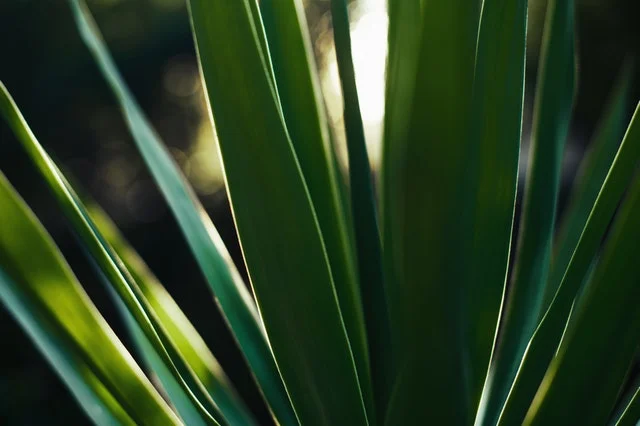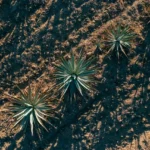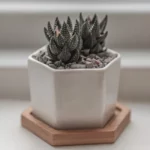Table of Contents
How To Care For Yucca Elephantipes
One of the houseplants that not too many people think about is Yucca Elephantipes. It’s a small plant with a super chunky stem; the name comes from the fact the stem sort of looks like an elephants’ foot.
The best way to describe the way Yucca Elephantipes looks is “Minimalist but also tropical”.
If the rest of your house is a bit minimalist, and you want a plant that will suit that style and liven the place up a bit, Yucca Elephantipes could be the ideal plant for you.
What does your Yucca Elephantipes require?
Looking after the Yucca Elephantipes is similar to looking after most other small trees. However, taking care of this one is a lot easier than looking after a bonsai tree.
If you like the idea of having a small tree on your desk but don’t have the time to care for a bonsai, Yucca Elephantipes could be the perfect compromise.
Light Requirements
The best kind of light for Yucca Elephantipes is going to be bright lights. Be sure to keep it in a room that gets plenty of natural light.
If you live in a place that can get dark early at certain times of the year, the great thing about Yucca Elephantipes is that it will tolerate shade.
Unlike a lot of other houseplants, Yucca Elephantipes thrives best in indirect, unfiltered light. Making it the perfect plant to place on the window sill or a desk by a window.
You could even use it to filter through some of the sunlight for your plants that prefer filtered lights.
Temperature Requirements
When it comes to temperature, Yucca Elephantipes is very adaptable. It doesn’t really have an “optimum temperature range”. This could make it perfect for people who live in climates with radically changing temperatures.
Generally, so long as your room is neither freezing cold nor scorching hot, your Yucca Elephantipes should be fine.
Soil Requirements
With most plants, the better the soil, the happier the plant. This is not the case with Yucca Elephantipes.
They do best in the kind of soil that most gardeners refer to as “poor soil”. This kind of soil is generally low on minerals, dry, and alkaline.
But, just like other houseplants, the soil that your Yucca Elephantipes sits in should have good drainage, so the excess water doesn’t just sit around the roots.
Humidity Requirements
The average room will have humidity levels of around 40%. For the Yucca Elephantipes, this will be fine. There is generally no need to mist it or get a dehumidifier.
If you notice some of the leaves becoming a bit dry, this might be a sign there is not enough humidity in the room.
You can sort this out by giving your Yucca Elephantipes a light misting.
If you’re comfortable, your Yucca Elephantipes should be too. This makes it an excellent plant for people who are new to plants.
How to Water
The only time you need to water Yucca Elephantipes is when you notice the soil’s top is dry. And this is only when it’s getting enough light.
If your Yucca Elephantipes is being kept in low light, you shouldn’t water it unless at least the top half of the soil is dry.
Make sure to only give it enough water to make the soil moist, and don’t allow the roots to sit in water, as they will not absorb all of it, and it could lead to root rot.
How to Fertilize
Generally, the Yucca Elephantipes doesn’t need fertilizing.
But if you want to, it wouldn’t harm it if you occasionally give it a super weak fertilizer. For the most part, Yucca Elephantipes will thrive, even if you don’t give it any fertilizer.
Being a desert-loving plant, Yucca Elephantipes is not used to being given nutrients. In a forest, plants will get nutrients when other plants die and leak their nutrients in the ground. As you can imagine, this is not so common in the desert.
Extra tips for Yucca Elephantipes
Do you want to show off how well you’re taking care of your Yucca Elephantipes? Here is our advice on how to go from a regular plant parent to someone who really knows what they’re doing.
This advice is for people who want to take their plant care to the next level and show the world they can and do look after their Yucca Elephantipes perfectly.
Pests & Diseases
Yucca Elephantipes can be quite popular with insects. And not all of them big enough for us to see without looking very closely. But when you notice spots on the plant, that’s a sign it has become a buffet.
There’s only one way to stop them. You need to kill them. This can be done by giving the Yucca Elephantipes a light spray with insecticide.
Pruning
Most of the time, Yucca Elephantipes doesn’t need to be pruned. But when the leaves become yucky, you should remove them with sharp, clean instruments. And make sure not to damage the plant when you take off the leaves.
Propagation
Propagating the Yucca Elephantipes is similar to other plants. The first step is to take a leaf off and allow the cut to dry for 24 hours. When it’s dry, place it into water, and wait for 3-4 weeks for some rooms to start forming.
When the roots arrive, transfer the plant into a small pot of its soil, and wait for it to grow. As it gets bigger, you will need to move it to a bigger pot.
Yucca Elephantipes is a tree, and most trees will take a long time to grow. So you may need to wait a few years before your plant will become like it’s parent.
FAQ
Is Yucca Elephantipes a good indoor plant?
Yes, Yucca Elephantipes is an excellent indoor plant. It enjoys being at indoor temperature, and the humidity that most rooms provide is perfect for it.
In fact, you might even say that Yucca Elephantipes is a better indoor plant than an outdoor plant.
How often do you water a Yucca Elephantipes?
Yucca Elephantipes doesn’t need to be watered too often. If you water it once every 11 days, that should be enough.
And when you do, just get the top of the soil moist. If you drown your Yucca Elephantipes, it won’t stand a strong chance of survival.
Do yucca plants need full sun?
Not all varieties of Yucca plants need full sun. However, Yucca Elephantipes is one that prefers full sun to filtered sunlight.
How do you look after Yucca Elephantipes?
To look after you Yucca Elephantipes, keep in in a “poor quality”, alkaline soil. Keep it somewhere with plenty of natural sunlight, and water it lightly once every 10 days.
Aside from that, you don’t need to alter the room temperature and do anything with the humidity. Yucca Elephantipes is super simple to look after.
Does Yucca Elephantipes clean the air?
Yes, all Yucca plants, including Yucca Elephantipes, clean the air. Not only do they turn Carbon Dioxide into Oxygen, but they also clean out harmful chemicals such as formaldehyde.
This could be a brilliant plant for you if you struggle to sleep. By cleaning the air, it will prevent you from waking up in the middle of the night, needing oxygen.
How long does Yucca Elephantipes live?
Usually, Yucca Elephantipes will last for around 10 years. This is not a lot of time for a tree, but it is longer than the typical Yucca plant will live for.
Most of them will only live for around 5 years.
Is the Yucca Elephantipes useful as a skin salve?
Yes, Yucca Elephantipes is an excellent skin salve. In fact, before the Europeans came over, Native Americans would use it to treat wounds.
The leaves of Yucca Elephantipes have biochemicals that help the skin heal quicker and even fight off bacterial infections.
You just need to be careful that you only use the leaves. The stem and roots are poisonous, so you don’t want to be rubbing that onto your cuts.
Where does Yucca Elephantipes come from?
Yucca Elephantipes is a native American plant. It can be found in the wild across the continent. Just a few countries where you might find Yucca Elephantipes include Belize, Costa Rica, El Salvador, Southern USA, and Mexico.
Most of these places will have a similar climate, and Yucca Elephantipes is excellent at adapting to new places.
Is Yucca Elephantipes poisionious?
The root, stem and branches of Yucca Elephantipes are poisonous. However, the leaves are the opposite. Not only are they not toxic, but they also prevent poison from damaging the body.
But my advice would be not to eat this plant. The leaves can heal skin wounds, but our bodies are not able to digest them. Eating the leaves can make you sick, and eating the stems, roots, and branches can make you very ill.
Why is it called Yucca Elephantipes?
The name Yucca Elephantipes comes from the fact the stem looks like an elephants foot. And the Yucca is just from the fact it’s part of the Yucca family.
It’s unlikely that an elephant would enjoy eating the Yucca Elephantipes. They don’t live anywhere near each other, and they probably wouldn’t be able to digest them.
How big is Yucca Elephantipes?
Your Yucca Elephantipes is unlikely to grow much higher than about half a metre. But in the wild, Yucca Elephantipes can grow up to 30 foot tall.
But if you were to have a Yucca Elephantipes this size, you might struggle to fit it onto your desk.
Suppose you live somewhere with the right climate. In that case, you might consider having a larger Yucca Elephantipes for you to keep in your garden.
Photo by Tim Mossholder from Pexels


